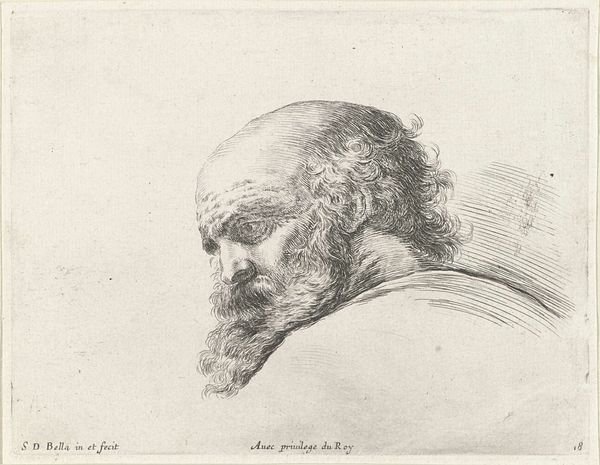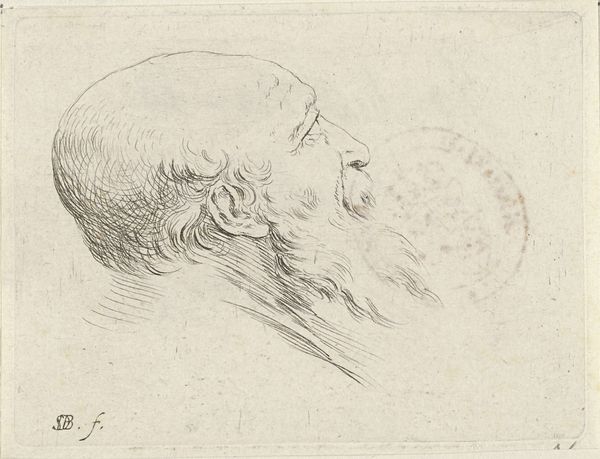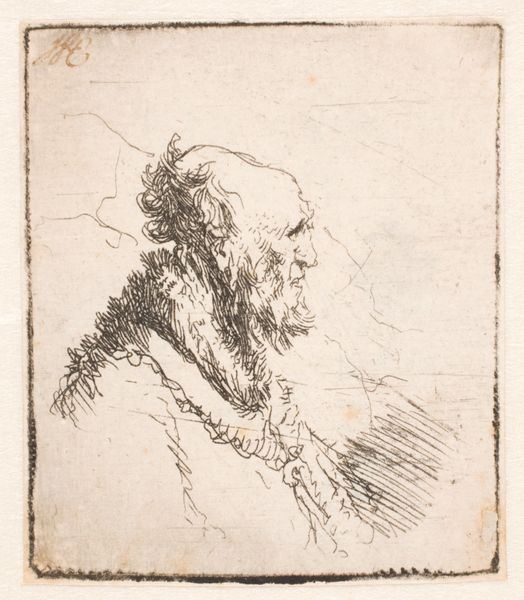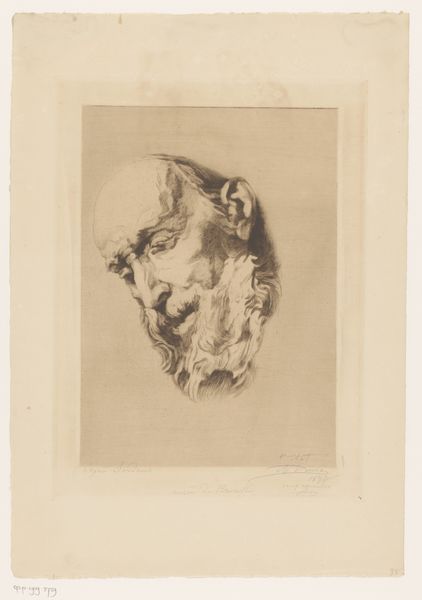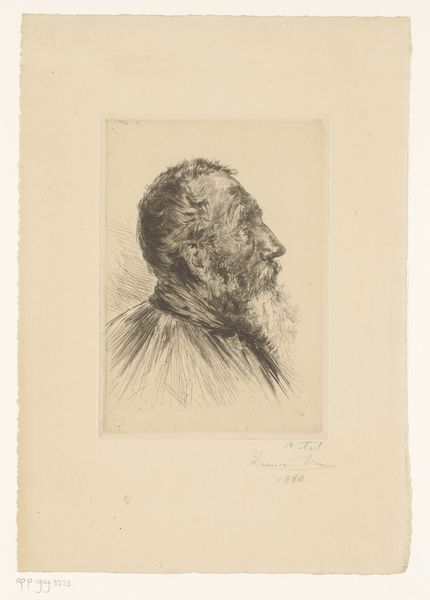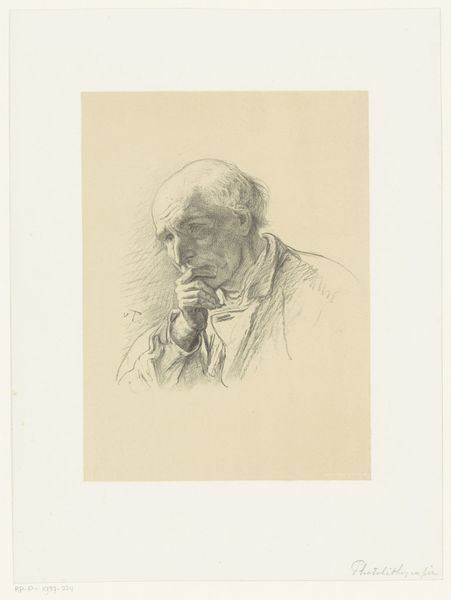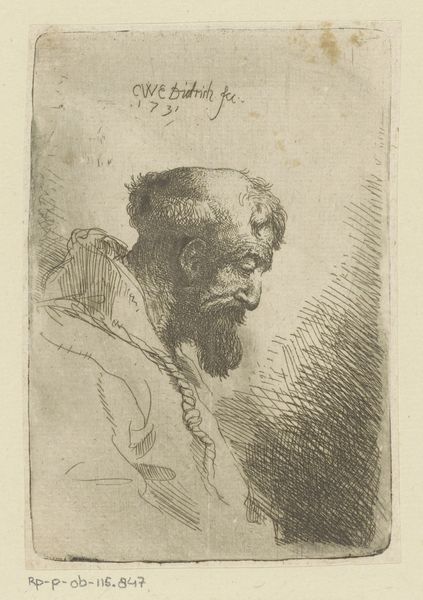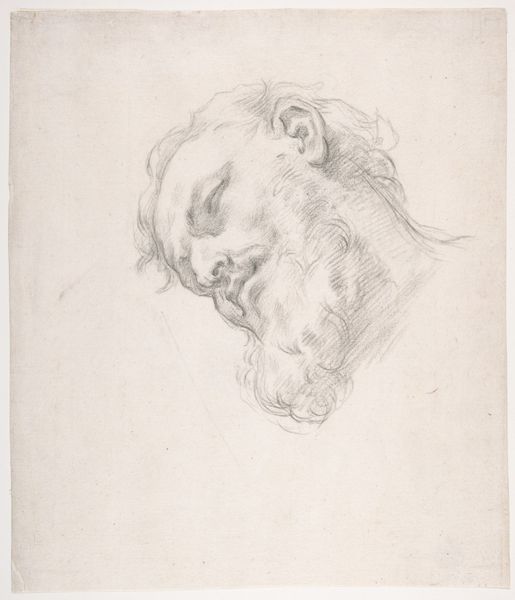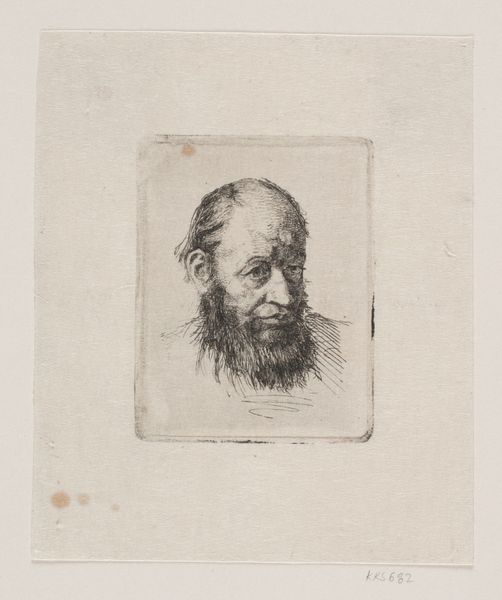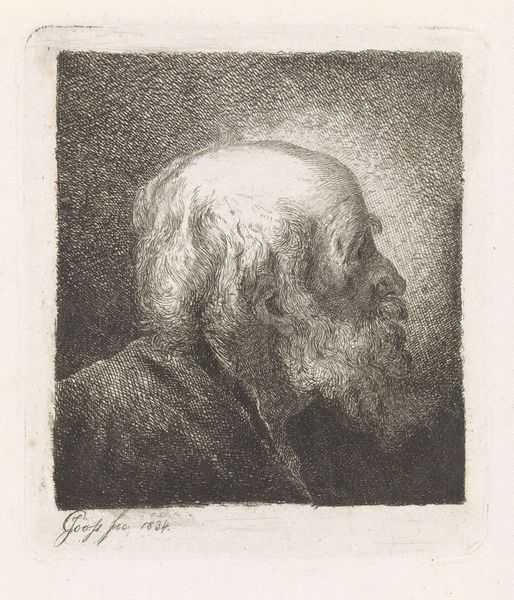
drawing, print, etching
#
portrait
#
drawing
#
baroque
# print
#
etching
#
figuration
Dimensions: 4 1/2 × 5 7/8 in. (11.43 × 14.92 cm) (plate)5 3/16 × 6 9/16 in. (13.18 × 16.67 cm) (sheet)
Copyright: Public Domain
Editor: Here we have "Head of a bearded old man," an etching by Stefano della Bella from around 1641, residing at the Minneapolis Institute of Art. The intricate lines that compose the face feel very immediate and intimate. How do you interpret the historical context and social forces influencing an image like this? Curator: It’s intriguing to consider who this image was intended for and how it functioned in society. Etchings, being relatively reproducible, broadened art's reach. Della Bella operated within courtly circles; do you think this image catered to a specific intellectual or social milieu interested in ideas of age and wisdom? Perhaps part of a larger series or commentary on the stages of life, distributed through print networks? Editor: That's interesting! I hadn't thought about the reproducibility influencing its meaning. Did these kinds of images serve a political purpose as well, by portraying certain virtues or reflecting social hierarchies? Curator: Absolutely. Consider the sitter's "wisdom beard" - an overt marker of experience and knowledge. Portraits in general have always had that potential. The question becomes: is this idealized wisdom a reinforcement of power structures or something else? How does this etched portrait relate to painted portraits of the time which tended to be the province of the elite? The 'privilege du Roy' text hints at institutional backing; how might the sponsorship influence its circulation and reception? Editor: So it's not just about what's depicted, but how and where it was distributed and who had access to it? Curator: Exactly. The etching technique democratizes the image, to some degree, and we should ask why this particular image, this specific representation of an older man, might have appealed to the cultural values of the time. Editor: This makes me rethink my initial impression! It's not just an interesting face, but a piece of a larger conversation about knowledge, power, and access to art. Curator: Precisely! Looking beyond the aesthetic allows us to uncover a network of meanings.
Comments
minneapolisinstituteofart almost 2 years ago
⋮
The accomplished Florentine etcher and draftsman Stefano della Bella produced this drawing manual in France, where he spent over a decade of his career. The book, now disassembled, comprised 25 etchings and was published by della Bella’s principal French publisher Pierre Mariette. Drawing manuals were common teaching tools for artists and amateurs learning to draw in the 16th and 17th centuries. It is a kind of pattern book for the aspiring draftsmen to copy, with concise prints depicting body parts—ears, eyes, hands, feet—and a range of head studies and figure types—children, adolescents, young women, old soldiers and saints—which provide models for students seeking to master the representation of the human body.
Join the conversation
Join millions of artists and users on Artera today and experience the ultimate creative platform.

